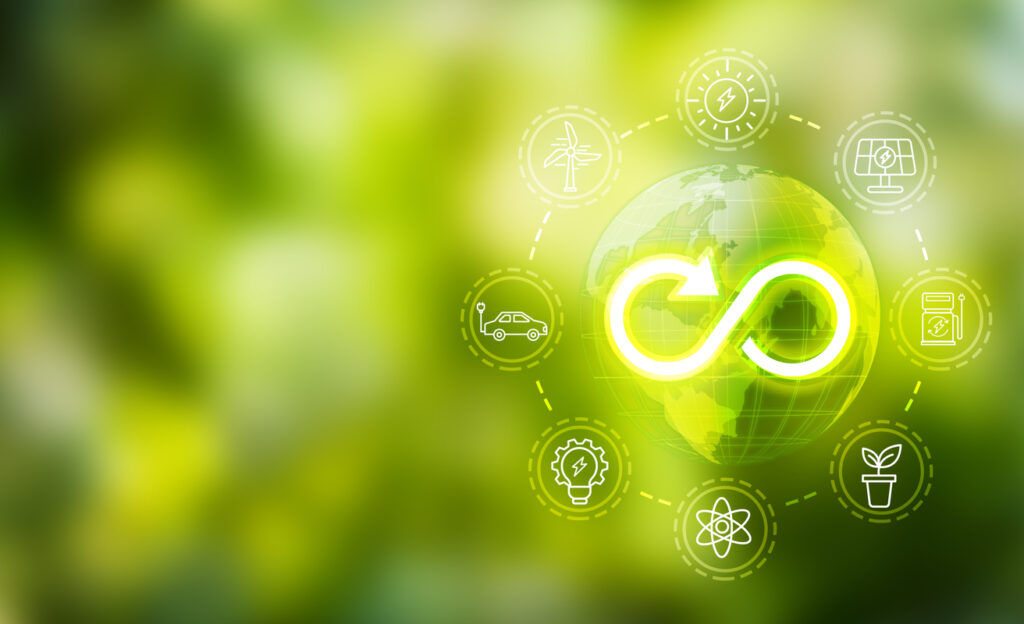Plastics Transition to Circularity: Addressing Disruptive Truths

Efforts to rectify decades of mismanagement of plastics have grown exponentially over the past 5 years. Examples include the UNEP commitment for a global treaty for plastics waste, the expanding application of extended producer responsibility to packaging, regulations restricting the use of plastics in short-lived, discretionary applications, as well as taxes on virgin polymer accompanied by minimum recycle content legislation.
This is with good reason, however, as the statistics of the plastics crisis are sobering. If left unchecked, global plastic waste production could reach as much as 460 million metric tons per year by 2030, according to McKinsey. This could elevate the environmental challenge that plastic waste poses to new heights – and as global efforts toward a net-zero future accelerate, acting now is imperative.
To effectively combat this threat and drive increased circularity for the plastics and chemical industries, stakeholders across the value chain to address five disruptive truths about circular plastics.
Growth in plastics waste
The first disruptive truth is that, despite increased consumption restrictions, the world will continue to generate increasing quantities of plastic waste. Demand for plastics will continue to grow in both durable and non-durable applications, driven by fundamentals of population growth and improved standards of living in regions such as Africa, India and South East Asia. The quantity of plastic waste is projected to increase by 70% over the next 30 years. According to research by our Chemical Market Analytics team, 2.1 billion metric tons of municipal solid waste were generated globally in 2020, of which 252 million tons constituted plastics used in non-durable products such as packaging. Without intervention, our forecasting models predict that levels of plastic waste will hit almost 3.6 billion metric tons by 2050 – a staggering figure that will lead to a global plastic crisis.
The volumes of plastics used in highly discretionary, single-use applications and subject to existing bans are less than 5% of the overall demand; so banning our way to circularity is not in itself a solution. The world is set to face significant challenges in the near future as a substantial number of regions are currently characterized by low collection rates when it comes to plastics.
Plastic Waste Recycling Faces Infrastructure Challenges
Different technologies exist to recycle plastics, and each has strengths and weaknesses. Mechanical recycling technologies have matured and possess favorable attributes such as lower CAPEX requirements, lower operating costs for achieving break-even economics and lower CO2 emissions. However, mechanical recycling is restricted by reduced feedstock flexibility and the degradation of plastics after every recycling cycle.
On the other hand, chemical and other recycling technologies such as solvent solution/dissolution, depolymerization, pyrolysis and gasification can produce recycled content without degradation of properties. However, widespread commercialization of these technologies has not yet been realized and will be required to move toward achieving true carbon-negative plastics recycling.
Tackling the plastic waste challenge is intimately linked with another disruptive truth – that the current pace of recycling capacity growth is wholly inadequate. Scaled technology and associated infrastructure for plastics recycling – including collection, sorting, mechanical and chemical recycling processes – remain in the very early stages of development in many ecosystems.
Today, many collection systems are under economic pressure and are overwhelmed with waste volumes of all materials. Even in Western Europe and the U.S., waste collection streams and systems have relatively low-input volumes compared with the requirements needed to achieve economies of scale. There are also significant gaps in supply and end-use demand for recycled material, which pose an additional challenge. As regulatory efforts accelerate and investment into solving the collections infrastructure problem increases, an ability to track the potential impact of associated risks, costs and emissions through access to the right data may prove the difference for stakeholders in the years to come.
Plastic Waste Recycling is Unbalanced
Another disruptive truth is that the plastics waste problem is going to get worse and will continue to grow unless all recycling options are incorporated and globally accepted standards and measurements implemented. Demand for recycled plastic that can displace virgin fossil-based demand far exceeds today’s supply. Even with increased supply quality targets and traceability for additives is a challenge. As such much of the post-consumer, mechanically-recycled plastics (PCR) plastics, must go to incremental, downcycle, applications and never impact virgin plastic demand; these applications – asphalt modification, plastic lumber, construction blocks, etc. – provide an immediate end of life sequestering of plastics waste, not a circular solution.
Circular Plastics Faces Competition
A fourth disruptive truth is the scope 1 and 2 carbon footprint of the chemical recycling processes. As recycling technology evolves, efficiency in materials and operation must remain top of mind. In the context of the wider energy transition, it is vital to carry out deep life cycle analyses that consider not only scope 1 and 2 emissions from the manufacture of plastics polymers but also the end products – and the competition that end products face against conventional materials such as glass, paper, and metal. As each value chain looks to achieve a net zero position, the cost of doing so will in many ways determine relative material competitive positions.
Plastic Waste: Moving Beyond a Fossil-based Feedstock Peak
The final disruptive truth is that addressing the problem of plastics waste does not automatically result in the elimination of fossil fuels in the production of plastics, far from it. Displacing the use of fossil fuels in the production of plastics remains a challenge and is significant given that plastics account for approximately 50% of global chemicals demand, and the current level of annual plastics waste generation, even if fully recycled, is not able to satisfy the total global demand for plastics.
While it is theoretically possible in the future for plastics recycling to contribute to a plateau in global use of fossil fuels, processing plastic waste will still require fossil fuels to a certain extent from an energy and raw materials standpoint. Unfortunately, it is unreasonable to expect the recycling of plastic waste to be the total solution for reducing our dependence on fossil fuels – new technological innovations and more efficient processes must come into play. It is, therefore, imperative to be able to track the development of the various technologies and the pace at which they are developing to make the right investment calls.
Circular Plastics: Achieving Long Term Circularity in Plastics Production Has Economic Benefits
The potential impact of achieving a circular economy for plastics economy offers undeniable economic, social and climate benefits for all stakeholders. As businesses and investors increasingly allocate capital to plastic waste recycling efforts, staying on top of the outlined “truths” will be paramount when it comes to driving effective change as part of efforts toward a net-zero future. Amid changing policy and regulations, securing access to the right business intelligence and analytics are pivotal in helping companies reformulate business strategies as needed to increase circularity when it comes to plastics and reducing contribution to the global plastic waste crisis.
Author

Anthony J. Palmer
Vice President, Circular Plastics

Robin Waters
Research & Analysis Director, Circular Plastics Service

Jonny Goyal
Director, Technology and Infrastructure, Circular Plastic Services
Learn how we can help you prepare and navigate market disruptions

Embracing the Infinite Possibilities
Chemical Market Analytics by OPIS, a Dow Jones company, with participation from The Wall Street Journal, Barron’s, and Factiva, presents the 2023 World Chemical Forum, a new event that redefines comprehensive exploration of the future of chemicals and energy, their inter-relationships, and how both markets will address global challenges this century.
Energy and chemical markets are evolving in profound ways and ushering in a fourth historical industrial and social revolution with Infinite Possibilities. Leading global experts and industry executives from all market sectors will convene to hear expert forecasts for key chemical and energy markets and discuss pivotal initiatives including chemical sustainability, the evolving logistics landscape, risk management strategies, and the future impact of Asia on the world.
The comprehensive agenda includes one day dedicated to a global view of the current and future chemical market and two days of guidance on the specific trends shaping the market.
Don’t miss any of it: register now and ensure your attendance at this exciting inaugural event!
